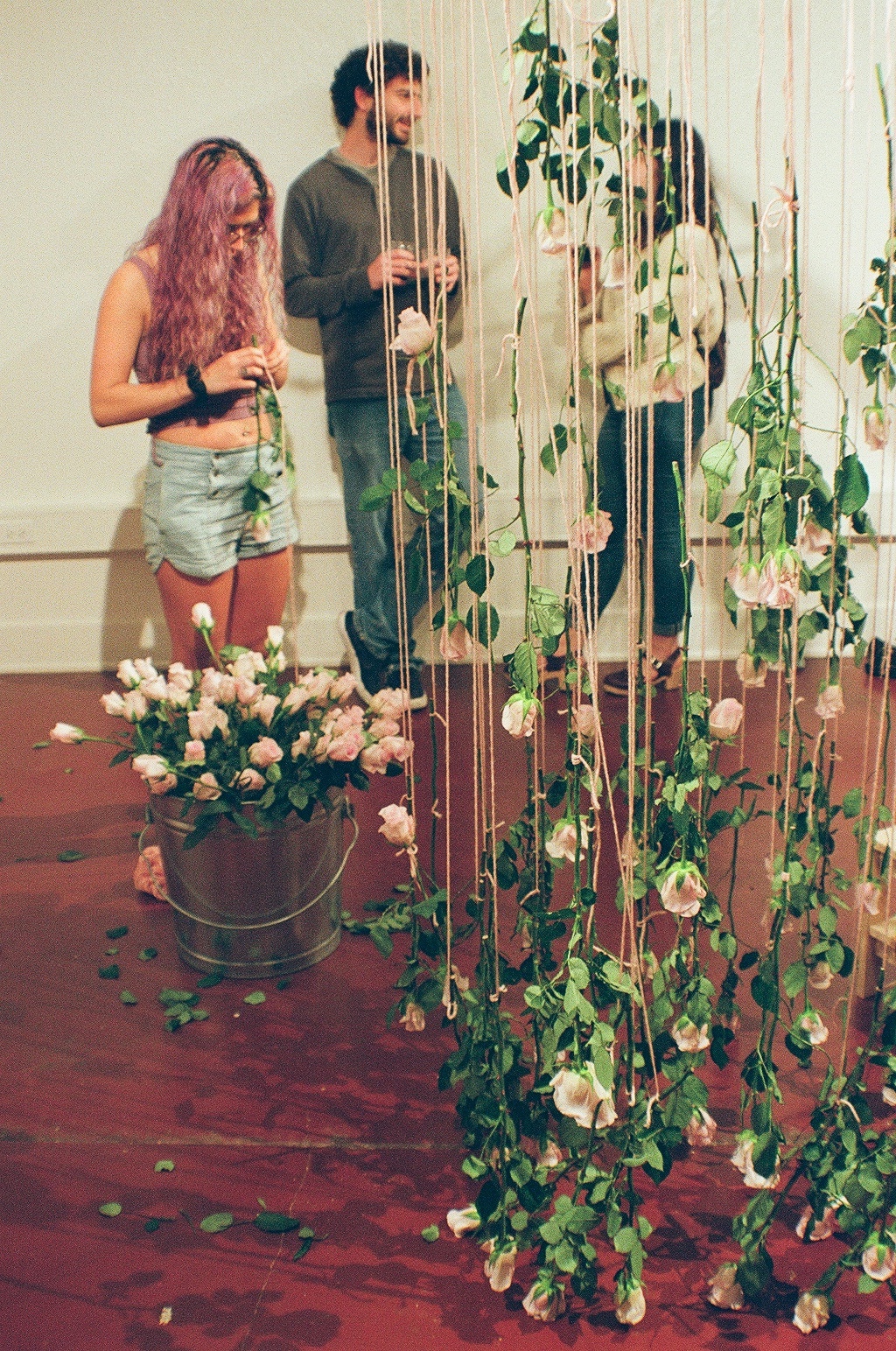
BOUQUET
Arts
Independent/Senior Galley Exhibition
BOUQUET was a participatory art event open to the public, where anyone and everyone was welcome into UC Santa Cruz’s Eduardo Carrillo gallery to pick and hang a rose off a wooden grid. Participants hung their rose on the night of opening reception, but were encouraged to check back in periodically throughout the week to witness how their rose, over time, had lived and dried among everyone else’s. BOUQUET aimed to serve the community by encouraging communal interaction in a time when many are experiencing political and/or social unrest, turmoil and insecurity. By being a participatory event, BOUQUET engaged the open public through the simple, minimal execution of hanging a rose. Again, anyone was welcome to participate, as the event gathered a diverse group of peoples into a space, shared.
Most of the gallery space was left bare, besides the simple wooden grid hung up on a pulley system and the galvanized metal bucket which carried the bouquet of light-pink roses. The minimal use of the gallery was helpful in leaving enough open space for people to walk about and interact with the piece and with each other. To hang their rose, guests used some of the provided pink yarn to measure out and snip a length according to their own individual height. Guests were then loosely asked to tie their rose to one end of their yarn, and the other end of that yarn to a point on the grid (a wooden step-stool was also made and set in place for those of us who were unable to reach the grid on their own). As the bouquet began to fill, the grid gradually became heavier, bobbing up and down slightly as each individual tied their rose to their liking. Some people kept the entire length of their yarn equal to their body, others shortened it. Some people tied their rose by the end of the stem, others by the bud. Some people tied their rose to a friend’s rose or shared the same point on the grid. One person decided not to hang their rose at all but instead, chose to throw it over the grid to lay on top.
Having BOUQUET done in the Spring was particularly appropriate for the obvious reason that it was a flower-related project; both roses and the Spring season connote to ideas of birth and rebirth, cycles in time and life, and so on. Additionally, roses are ephemeral in nature and it was interesting connecting this idea to the ephemerality of being a student.
With that said, it’s important to reiterate that all roses were a light-pink. This color brings to mind a sense of fragility, perhaps, or intimacy, but I would take a step further to suggest the color connotes to or stands in for the flesh. By hanging their pink, flesh-colored rose on yarn the length of their body, the hung flower came to embody fully the participant themselves. In this way, the roses become anthropomorphic. Our inner cores were hung and left to dry in a shared space as we may came to realize, through this act, we share more in common than we believed otherwise.
As an artist, I was interested in how BOUQUET was read as an event by peoples outside an art sphere, by those unfamiliar with art as an evident experience/experiment; as a social interaction. I am interested in the effects BOUQUET had on our larger communities by simply being participatory. Was it read as just an art piece? Or something much more or less? Because with BOUQUET, the distinction between artist and participant/viewer was blurred. In fact, the participant truly become the artist, as they become an integral part in the making of the project, of which, once fully realized, embodied a more traditional sculptural form. Through their interactions, the artist/participator became a piece of the art itself as well and the distinction between art and life was further blurred.